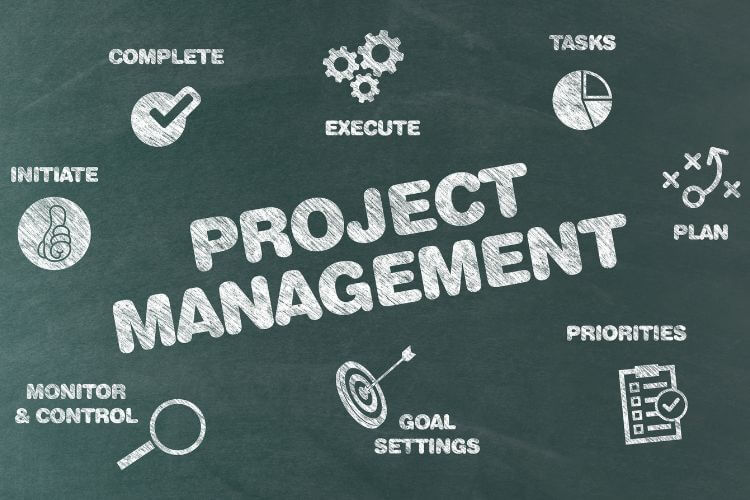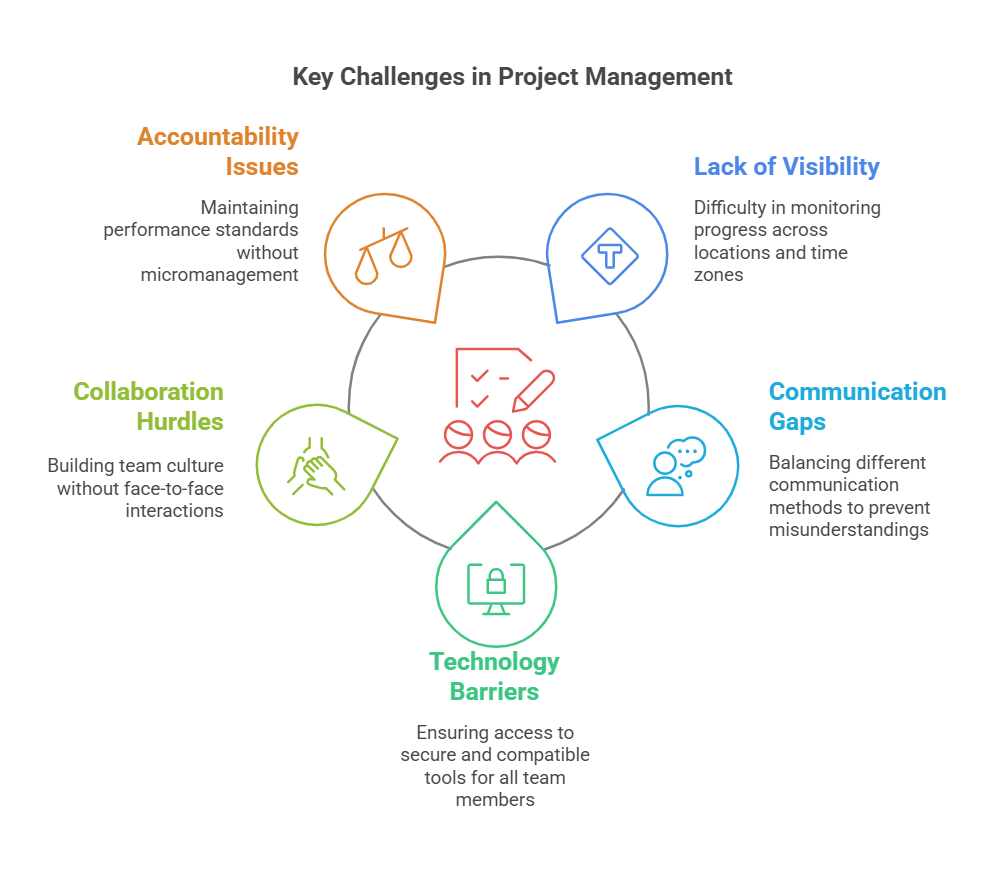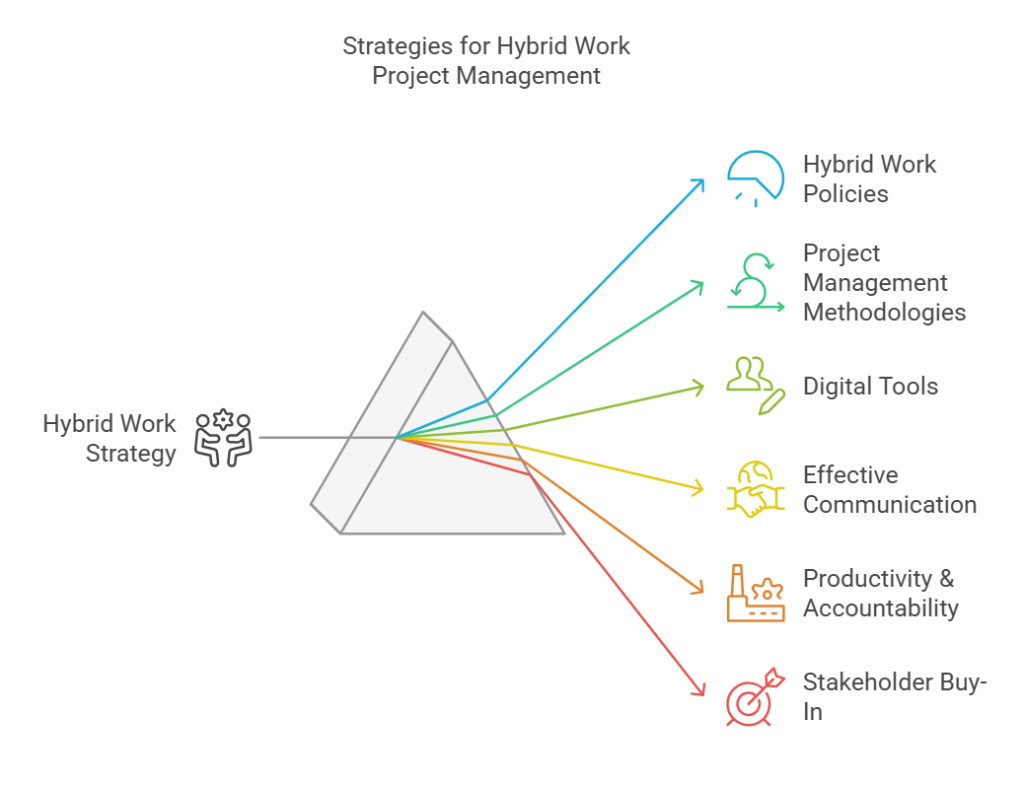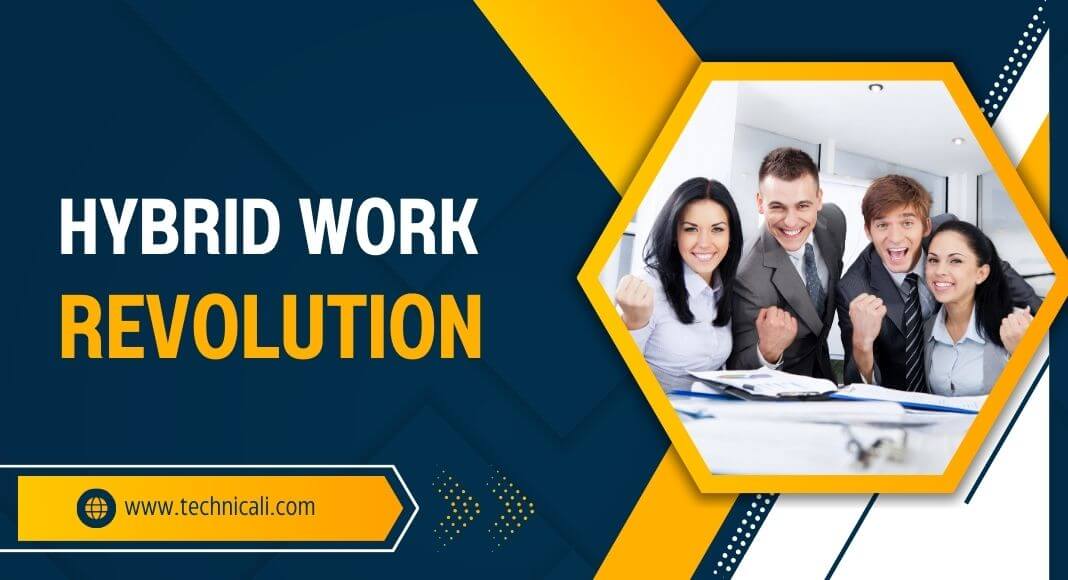Contents
- 1 Introduction: The Hybrid Work Revolution
- 2 What is Hybrid Project Management?
- 3 The Key Challenges of Managing Distributed Teams
- 4 Proven Strategies for Hybrid Work Project Management
- 4.1 1. Establishing a Clear Hybrid Work Strategy
- 4.2 2. Choosing the Right Project Management Methodology
- 4.3 3. Leveraging Digital Tools for Seamless Collaboration
- 4.4 4. Ensuring Effective Communication Across Distributed Teams
- 4.5 5. Managing Productivity & Accountability in a Hybrid Workplace
- 4.6 6. Securing Stakeholder Buy-In for a Hybrid Approach
- 5 Hybrid Project Management Best Practices
- 6 Frequently Asked Questions (FAQ) on Hybrid Work Project Management
- 6.1 1. Why is hybrid work becoming the new standard?
- 6.2 2. What are the biggest challenges of managing hybrid teams?
- 6.3 3. Which project management methodologies work best for hybrid teams?
- 6.4 4. What are the best project management tools for hybrid teams?
- 6.5 5. How can companies ensure productivity in hybrid teams?
- 6.6 6. How do you maintain company culture in a hybrid environment?
- 6.7 7. What are the key benefits of hybrid work for businesses?
- 6.8 8. How can companies measure the success of hybrid work models?
- 7 Conclusion: The Future of Hybrid Work & Project Management
Introduction: The Hybrid Work Revolution
The global transition towards hybrid work models has revolutionized conventional project management strategies. Post-pandemic, most organizations have adopted a hybrid agile approach, appreciating advantages like enhanced flexibility, cost benefits, and Access to a varied talent pool, coupled with efficient resource utilization. However, digital tools and meetings may enhance communication in hybrid environments. Managing a distributed team presents unique challenges that require innovative strategies.
What is Hybrid Project Management?

Hybrid project management incorporates aspects of waterfall and agile approaches designed to fit remote and on-site teams, such as scrum project management and sprints. The method provides the planning framework of waterfall models and the flexibility of agile methodologies, which makes it perfect for fast-paced environments. As businesses handle the challenges of hybrid workspaces, embracing such methodologies guarantees effectiveness and integration.
The Key Challenges of Managing Distributed Teams

Managing distributed teams involves addressing several challenges:
- Lack of visibility: Coordinating projects across different locations and time zones can make it difficult to monitor progress effectively.
- Communication gaps: Balancing asynchronous and synchronous communication requires careful planning to prevent misunderstandings.
- Technology barriers: Ensuring all team members have Access to secure and compatible tools is essential for seamless Collaboration.
- Collaboration hurdles: Fostering a cohesive team culture without regular face-to-face interactions demands intentional effort, especially within the agile context.
- Accountability issues: Maintaining performance standards without resorting to micromanagement is a delicate balance.
Proven Strategies for Hybrid Work Project Management

1. Establishing a Clear Hybrid Work Strategy
- Defining hybrid work policies: Clearly outline expectations regarding in-office and remote work to provide structure and flexibility.
- Setting hybrid work schedules: Implement consistent meeting times to help team members plan their workdays effectively and support resource allocation.
- Hybrid leadership strategies: The leaders must evolve by developing a sequential order of task management with the integration of aspects from both the agile and waterfall methodologies. Trust and encouraging autonomy, making teams work autonomously while remaining in tune with the organizational mission through agile methodologies and the work breakdown structure.
- Balancing autonomy with structure: Provide guidelines that allow flexibility without compromising accountability.
2. Choosing the Right Project Management Methodology
- Comparing methodologies for hybrid work:
- Agile vs. Waterfall vs. Hybrid models: Assess the nature of your projects to determine the most suitable methodologies you selected.
- Scrum and Kanban in hybrid workflows: These frameworks can enhance flexibility and efficiency in managing tasks, particularly through the flexibility of agile methodologies.
- Best methodology for hybrid teams: Tailor your approach based on project requirements, team dynamics, and elements from different methodologies.
- Using a Hybrid Agile Approach: Combine structured planning with iterative processes in specific project management to leverage the strengths of both methodologies.
3. Leveraging Digital Tools for Seamless Collaboration
- Best project management software for hybrid work: Tools like Trello, Asana, Jira, and Monday.com facilitate task tracking and Collaboration, especially for project managers who oversee various types of project management.
- Communication & meeting tools: Platforms such as Slack, Microsoft Teams, Zoom, and Google Meet support real-time and asynchronous communication, which is crucial for teams using the waterfall project management approach.
- Time tracking & accountability tools: Applications Toggl, Clockify, and Hubstaff are general tools for monitoring time on numerous projects. To efficiently utilize meetings. Assist in keeping track of productivity and workloads.
- Automation in hybrid project management: Implementing automation can streamline repetitive tasks, allowing teams to focus on more strategic activities.
4. Ensuring Effective Communication Across Distributed Teams
- Communication guidelines: Establish clear procedures for when to employ different communication channels to maximize clarity and efficiency in agile project management during the project.
- Best practices for hybrid meetings: Regular, structured meetings at consistent times can provide stability and predictability for team members.
- Encouraging cross-team Collaboration: Foster a culture of openness and inclusivity to bridge gaps between remote and in-office staff.
- Handling time zone differences: Implement techniques like rotating meeting schedules or asynchronous notifications to support global teams with the waterfall methodology.
5. Managing Productivity & Accountability in a Hybrid Workplace
- Setting clear KPIs for hybrid teams: Establish quantifiable goals to coordinate efforts and measure performance.
- Using data-driven insights to measure performance: Leverage analytics to monitor progress and identify areas for improvement.
- Establishing a results-based work culture: Focus on outcomes rather than hours worked to promote efficiency and job satisfaction in software development.
- Encouraging work-life balance to prevent burnout: Offer flexibility and support to help employees manage their personal and professional responsibilities effectively.
6. Securing Stakeholder Buy-In for a Hybrid Approach
- Convincing leadership to adopt hybrid project management. Present data and case studies demonstrate the benefits of hybrid models that combine the strengths of agile and waterfall project management.
- Cost-benefit analysis of hybrid work models: Highlight potential savings in real estate and increased employee satisfaction leading to higher retention rates.
- Addressing common objections: Provide evidence-based responses to concerns about productivity and Collaboration in hybrid settings, emphasizing the critical need for flexibility and adaptability.
- Case examples of businesses succeeding with hybrid models have success stories to share to demonstrate the advantages of hybrid project management and its success in meeting deadlines.
Hybrid Project Management Best Practices

- Combining flexibility & structure: Implement a hybrid project management approach that adapts to changing needs while maintaining clear processes.
- Encouraging adaptability: Promote a culture of continuous learning and openness to change.
- Attracting & retaining top talent through hybrid work: Offer flexible work options to appeal to a broader talent pool and reduce turnover.
- Balancing company culture across remote & in-office employees creates inclusive initiatives that engage all team members, regardless of location, to leverage the strengths of each approach.
- Measuring hybrid work success: Utilize key performance indicators and employee feedback to assess resource allocation.
Frequently Asked Questions (FAQ) on Hybrid Work Project Management
1. Why is hybrid work becoming the new standard?
The rise of remote work post-pandemic has highlighted the strengths of each approach to project management. It has been proven that employees can be highly productive outside the office. Many companies have adopted hybrid models to:
✔ Attract and retain top talent by implementing a hybrid agile methodology that supports both in-office and remote work.
✔ Reduce office overhead costs
✔ Improve employee work-life balance
✔ Maintain flexibility while ensuring Collaboration
2. What are the biggest challenges of managing hybrid teams?
Some key challenges include:
- Lack of visibility: Tracking progress across remote teams
- Communication gaps: Aligning remote and in-office staff.
- Tool overload: Too many software applications cause inefficiencies.
- Collaboration issues: Building company culture in a hybrid setting requires understanding the challenges of hybrid project management.
- Productivity & Accountability: Ensuring employees remain engaged and effective requires a hybrid approach that combines various pm methods.
3. Which project management methodologies work best for hybrid teams?
It depends on the nature of your projects. Popular approaches include:
- Agile: Best suited for those teams requiring planning and agile-project management frameworks that can work harmoniously. Agility and flexibility are central themes for agile project management, with which teams can evolve rapidly according to shifting timelines and project requirements.
- Scrum: Best for projects requiring frequent check-ins and sprint-based progress
- Kanban: Great for teams that need hybrid project management; it offers flexibility and iteration real-time workflow management
- Waterfall: Works well for projects that require structured, sequential planning
- Hybrid Approach: A mix of Agile and Waterfall are two distinct types of project management that cater to different project needs and take each approach into consideration. Balancing structure and flexibility
4. What are the best project management tools for hybrid teams?
Here are some top-rated tools that combine elements from different project management methodologies to enhance productivity:
✔ Asana – Best for task tracking and goal setting, are critical elements from different project management approaches to ensure project success.
✔ Jira – Ideal for Agile and Scrum teams
✔ Monday.com – Great for Custom workflows that can be designed to fit different project management methodologies, enhancing overall efficiency.
✔ Trello – Simple Kanban-based task management
5. How can companies ensure productivity in hybrid teams?
To boost productivity, companies should:
✔ Set clear Key Performance Indicators (KPIs) are essential for tracking performance across many projects. Objectives in project management is a versatile approach that combines elements from both waterfall and agile methodologies.
✔ Use Time-tracking tools are essential for managing productivity in virtual teams and for managing meetings well but they also help in project management. like Toggl, Clockify, and Hubstaff
✔ Focus on results-based work rather than hours worked
✔ Provide Regular feedback loops, which are essential in both waterfall and agile project management frameworks to ensure continuous improvement. and performance reviews
✔ Foster a strong team culture. Effective communication is crucial despite physical distance in managing remote project teams.
6. How do you maintain company culture in a hybrid environment?
Building company culture in a hybrid setting requires the following:
- Regular Team check-ins & virtual social events are essential for maintaining morale in a hybrid setting that efficiently and effectively embraces the best of both worlds by planning and kicking off initiatives.
- Clear communication of company values & vision
- Encouraging Collaboration across remote and in-office teams is essential to meeting every project deadline effectively, especially when employing agile project management concepts within the agile framework.
- Investing in team-building activities, both online and in-person, can utilize different methodologies to enhance engagement.
7. What are the key benefits of hybrid work for businesses?
Companies that adopt hybrid work models experience:
✔ Higher employee satisfaction & retention
✔ Increased productivity and efficiency are often achieved by using a versatile approach that combines elements from different methodologies.
✔ Cost savings on office expenses can be achieved through effective resource allocation in a hybrid work environment.
✔ AccessAccess to a broader talent pool globally is enhanced by adopting a versatile approach that combines elements from various methodologies.
✔ Improved work-life balance for employees
8. How can companies measure the success of hybrid work models?
Success can be measured using:
✔ Employee engagement & satisfaction surveys can help identify the effectiveness of agile methodologies within teams.
✔ Performance metrics & project completion rates
✔ Turnover rates compared to pre-hybrid implementation
✔ Cost savings from reduced office expenses
✔ Productivity analytics from project management tools
Conclusion: The Future of Hybrid Work & Project Management

The hybrid work model The waterfall approach is no longer a fleeting experiment it has cemented itself as a viable method for specific projects. The future of work is moving towards project management models that highlight Collaboration and flexibility. Organizations adopting hybrid project management models will be able to beat the competition in the hybrid workplace. Organizations that adopt flexibility and flexibility can beat the competition by creating greater flexibility, more efficiency, and better employee engagement. However, success in hybrid work environments isn’t just about allowing remote work. It requires:
✔ A structured yet adaptable project management approach is crucial for navigating the challenges of hybrid project management.
✔ Seamless integration of collaboration tools is crucial for the success of different project management methodologies.
✔ Clear policies that balance autonomy with accountability are crucial for the workforce in a hybrid work model.
✔ Strong leadership that nurtures communication & company culture is vital for overcoming the challenges of hybrid project management.
For every project, establishing a hybrid method can streamline processes and enhance outcomes. CEOs and SaaS executives have the ability to effectively manage distributed teams by utilizing resource allocation strategies. It will be a key differentiator. Organizations that implement agile methodologies often see improved Collaboration and productivity. Leverage hybrid methodologies, embrace innovation, and optimize their workflows through effective resource allocation. Will remain agile, competitive, and scalable In the years to come, the hybrid approach combines various methodologies to adapt to changing work environments.

